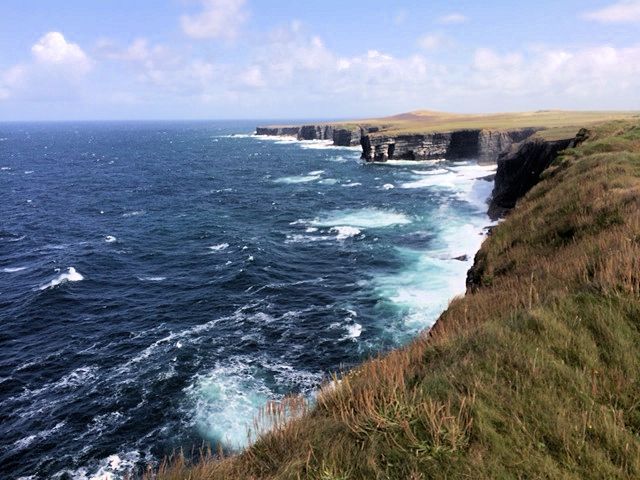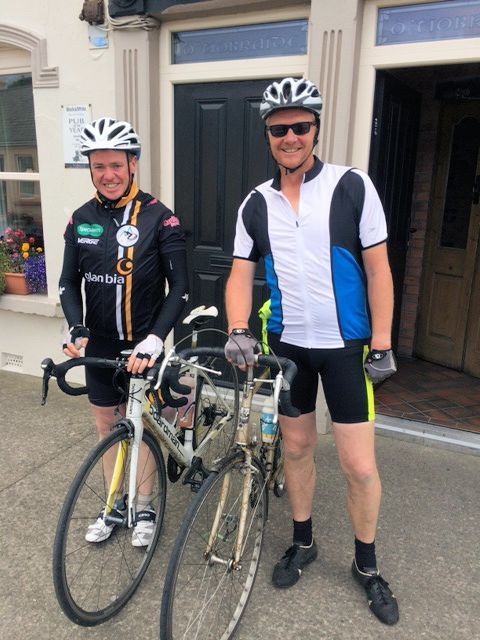
The morning saw blustery westerly winds bringing in heavy showers from the Atlantic, much as you would expect for touring the Loop Head Peninsula, the protruding lip of the Shannon Estuary. I was delighted to have Simon’s company for the circuit of the peninsula, as it made the tough conditions much more bearable. The low, windswept peninsula has its own charm.
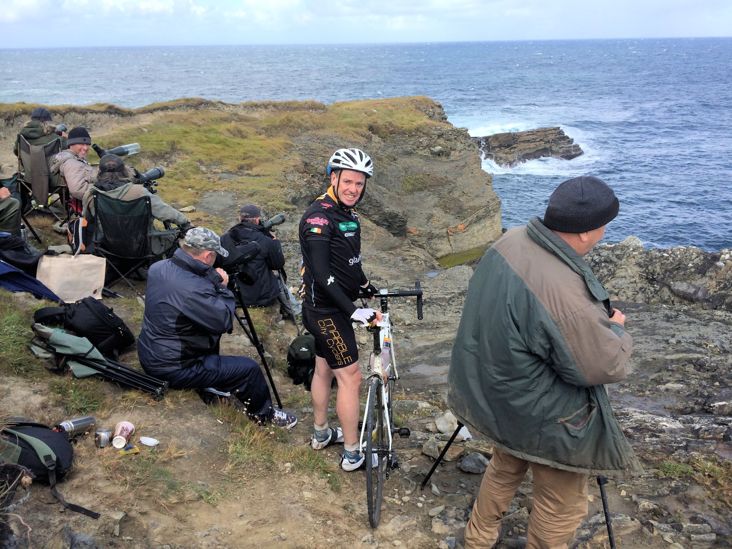
I always associate Loop Head with birdwatching as the only times I visited was either for bird ringing while being trained by Philip Brennan who operated a bird observatory here in the 1990s, or to watch seabirds from the Bridges of Ross. Protruding as it does into the Atlantic, it is easy to see how wayward migratory birds would land on this headland. But at this time of year, a small rocky shelf at the Bridges of Ross, just to the north-east of Loop Head, comes into its own. Perched here for much of August are telescope-bearing birdwatcher who scan the seas for the thousands of seabirds that pass off shore each day. Seabirds that usually stay far out to sea get pushed landward when north-westerly winds blow, bringing a bonanza of birds within sight of the Bridges. When we visited there were about a dozen hardy souls counting the birds passing by. Apparently, the conditions were not ideal for seabird watching as the winds were just westerly, not north-westerly, and they weren’t blowing strongly enough either. Despite that, already today in addition to the 1,000s of Manx Shearwaters, auks and gulls seen, they counted 10 Cory’s Shearwaters, 12 Great Shearwaters, 16 Great Skuas and 3 Sabine’s Gulls, all species rarely seen except by the most dedicated of birders. Niall Keogh of BirdWatch Ireland is co-ordinating counts of seabirds from all headlands in August as part of the Seatrack project to quantify the diversity and abundance of seabirds that fly past Ireland each year.
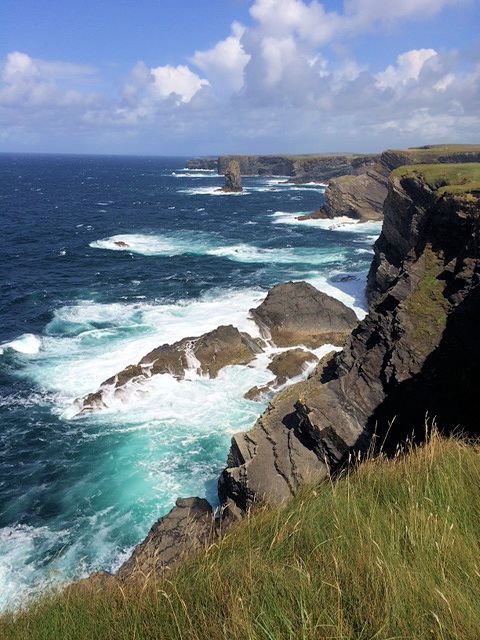
The cycle along the northern side of the Loop Head Peninsula towards Kilkee brought us along spectacular cliffs, not as tall as the Cliff’s of Moher, but varied for they are folded and fractured more. Also looked across to the isolated flat-topped Ilaunonearaun, home to a large population of Barnacle Geese in winter.
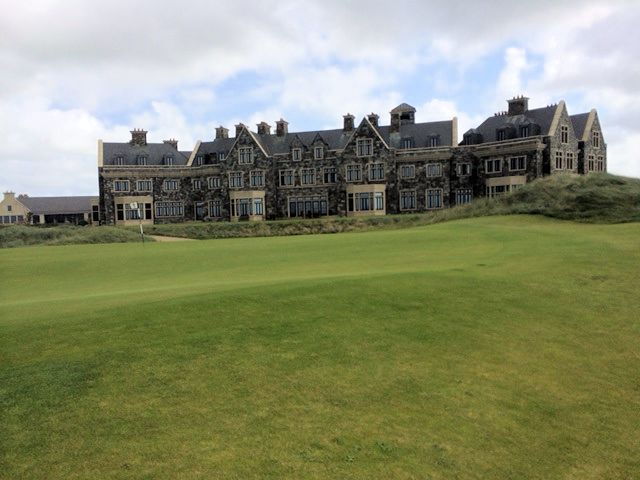
Simon headed for home at Doonbeg, while I called in to look at Doonbeg Golf Course – now renamed the Trumph International Golf Links & Hotel. This was an interesting visit for me, as I worked for the Heritage Council when this development was being planned, and we had objected strongly to the development. The reason being that we felt that the development of a large golf course and hotel could not be compatible with conserving the ecological integrity of the dune system. We took an objection to An Bord Pleanala, and lost; the development was given the green light, with conditions. Standing there now, with this huge development oozing of wealth and beautifully managed greens set amongst towering dunes, I didn’t know what to think. The dune system is incredibly well managed, probably managed better than any other land in west Clare, the site is monitoring regularly and the species are apparently doing well, and, not insignificantly, the development is by far the biggest employer in west Clare. I suppose, at least by fighting the conservation case when it was planned, it has meant that the ecological interest of the site was highlighted, and mitigation measures implemented properly. Another interesting observation at the time was that there were only two options on the table; not allow the development proceed and continue to have a poorly managed dune system, or allow the development proceed for a commercial operation and have a very well managed dune system (albeit for golf). There was no option to have a well managed dune system purely to enhance its ecological value.
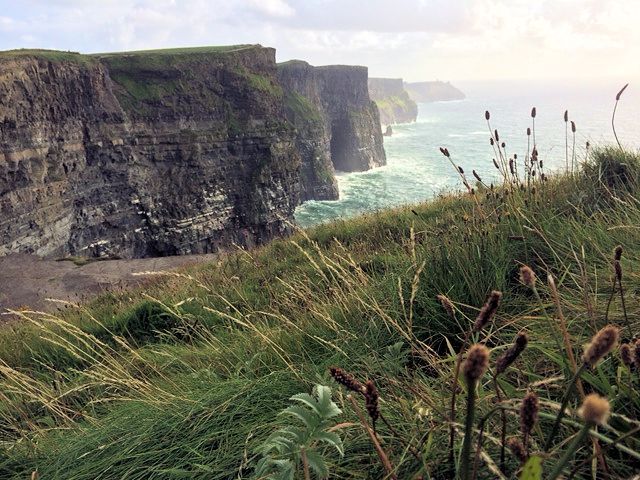
The end of the cycle brought me to the Cliffs of Moher, sheer cliffs standing over 200 m and running for about 8km, and one of Ireland’s leading tourism attractions. This is a massive development catering for hundreds of thousands of visitors each year. For years the visitor experience here was, at best, sub-standard, exhibiting all the characteristics of poor management. Recently all this has changed, with a large visitor centre built into the hillside and car parking moved away from the seaward side of the road. The area is still thronged by day, but everything is well managed. This is a bit late in the season, but earlier in the summer, the cliffs are home to thousands of nesting seabirds. And the star attraction here are the breeding Puffins that can be seen from the path. I am glad that these cliffs are so well visited, as it means if I want to experience the rugged wildness of west Clare, I will head to the peace and quiet of south of Kilkee.

